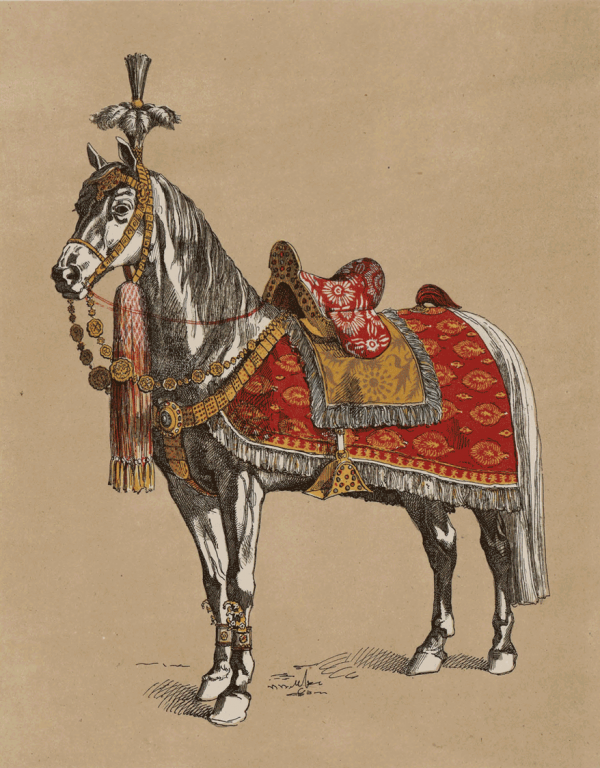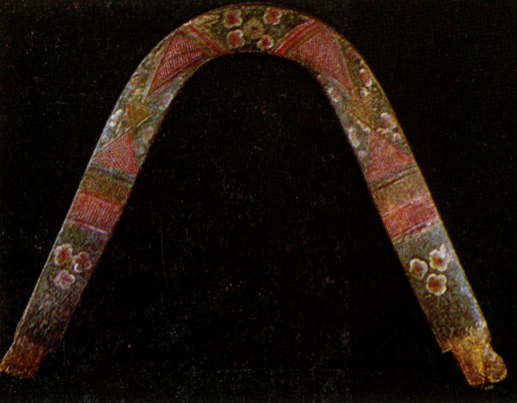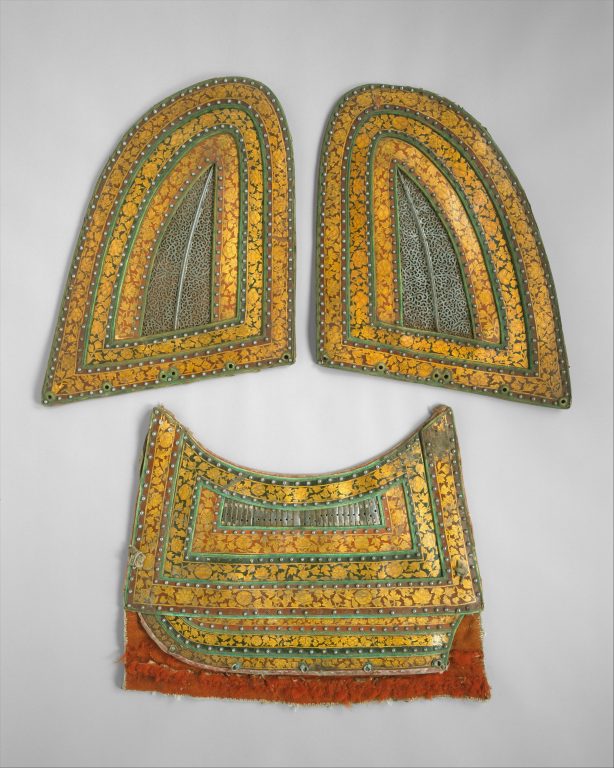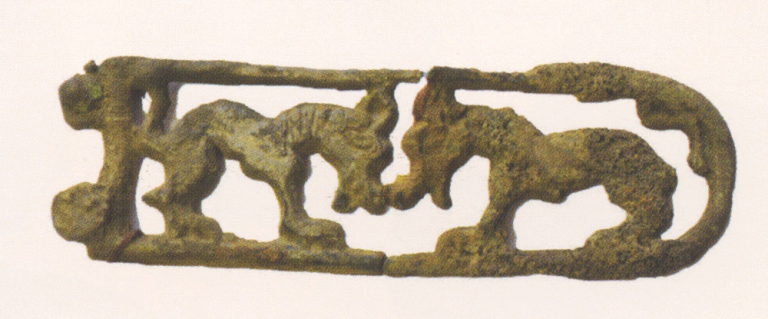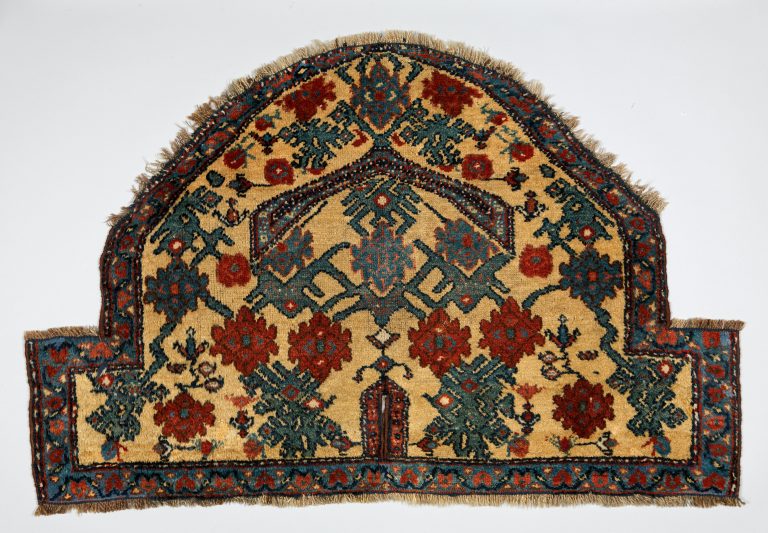

-
Object
-
Type of arts & crafts 1
-
Type of arts & crafts 2
-
MediumIron, gold, silver, wood, coral, ivory, silk, hair, tin, pigments, leather
-
SizeH. including textile 13 3/4 in. (34.9 cm); L. 27 3/4 in. (70.4 cm); W. 14 1/2 in. (36.8 cm)
-
Geography detailsCountry of Origin
China -
Country today
-
Date17th-18th century
-
CultureChinese
-
Type of sourceDatabase “Metropolitan Museum of Art”
-
Fund that the source refers toMetropolitan Museum of Art
-
In terms of quality and style of workmanship this saddle is extremely similar to some of the best imperial Chinese saddles, such as one owned by the emperor Qianlong (r. 1736–96) and preserved in the Palace Museum, Beijing (G.171546). In addition to its very high quality, this saddle is also exceptional for having all of its original parts, including the elaborate seat cover of embroidered silk and the fittings of the saddletree. Although this type of saddle is often identified as Tibetan, the form of the saddle plates, the style of workmanship, and the type of saddletree, along with the similarity to imperial Chinese saddles, indicate it is more likely to be Chinese, perhaps from the imperial workshops. That it was used in Tibet, however, is demonstrated by the Tibetan letter ka, which is branded on the underside of the saddletree as a form of inventory number. It must have belonged to a Tibetan nobleman of the highest rank, possibly received as a gift directly from the imperial court. The saddle plates are made from relatively thick iron, deeply chiseled and pierced, the motifs densely arranged so that the gaps in the scrollwork are narrow. The plates are finely crosshatched and damascened overall with a thick layer of gold foil. The beads of coral and ivory in the center of the pommel and cantle are popular Buddhist symbols called the Three Jewels, representing Buddha, Dharma (Buddhist teachings), and Sangha (the community of believers).



